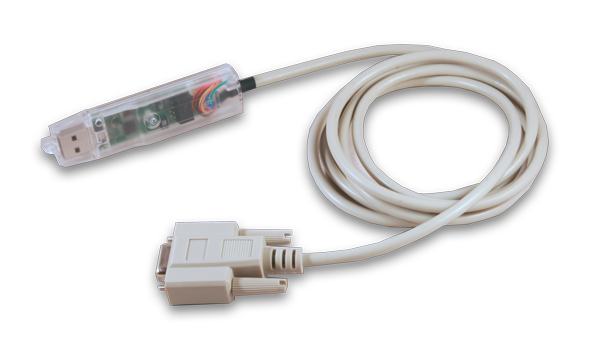The RO-SER-O16-64 module is available in versions with 32 or 64 optocoupler inputs. As interfaces the serial standards RS-232 or RS-485 are available. Additionally, the existing USB 2.0 port can be used.
- RS-232/RS-485 interface with galvanic isolation
- Open RS-232/485 protocol, plain text mode
- USB 2.0 interface with up to 480 Mbit
- 32/64 Digital inputs: 15V – 30V AC/DC (optional 5V – 15V)
- 16 bit counter per channel (up to 100Hz)
- LED status display per input channel

Digital inputs
With our optocoupler inputs, digital signal states can be recorded within a voltage range of 5V to 30V AC or DC. Input and output circuits are galvanically isolated from each other up to 2.5kV.
Digital In Input Filter
With our Digital-In modules, an input filter can be set in a time interval of 1ms…255ms to filter interference pulses.
This means that AC signals can also be detected cleanly.
Counter
Each input has a 16 bit counter that can count up to 65535 pulses. If the maximum counter value is exceeded, the counting process starts again from zero. By means of a software command, the current status of all input counters can be read from the module simultaneously.
Recording of status changes
Status changes that occur between the readout cycles are reliably detected by internal flip-flops and can be read out separately by software. In addition, such an event is signalled by a status LED. Resetting is done automatically after the flip-flops have been read out.

LEDs
Each digital input and output has a separate LED that lights up when the signal state is active. Furthermore, the status of the operating voltage, the communication with the interface, error events or the occurrence of a timeout can be displayed.

Connectors
A screwless system from the manufacturer WAGO Kontakttechnik is used as the connector. The 1-wire female connectors are 100% protected against mismating and have an eject and locking mechanism. All conductor types up to 1.5mm² can be connected.

Software and control
Our DELIB driver library, which is included with the product, makes it easy to address the product via our API.
We offer support for the following programming languages:
- C
- C++
- C#
- VB
- VBA
- VB.Net
- Java
- Delphi
- LabVIEW
We offer support for the following operating systems:
- Windows 10 (32bit/64bit)
- Windows 8/8.1 (32bit/64bit)
- Windows 7 (32bit/64bit)
- Windows Vista (32bit/64bit)
- Windows XP (32bit/64bit)
- Windows Server 2003 (32bit/64bit)
- Windows 2000
- Linux
Corresponding programming examples can be found in the “Software” section of the products or are included on the driver CD.












































































Reviews
There are no reviews yet.